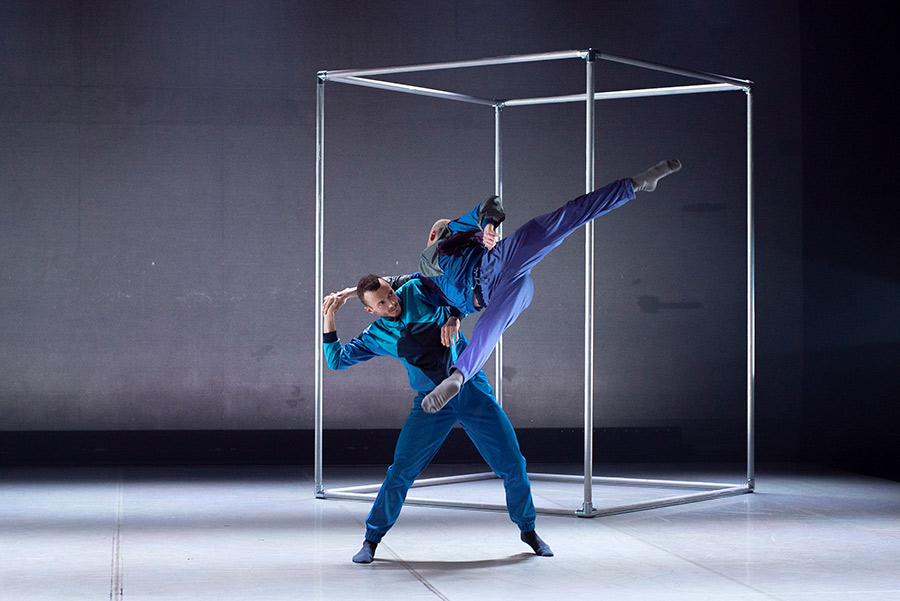A duet at the end of Them/Us stops me in my tracks. This evening of two separate works — demonstrating opposing modes of creation — is variable. But, in these final few minutes, I fall in love with the BalletBoyz: their powerful same-sex duos and their easy command of intricate choreography. Â
Compared to huge ensembles from The Nutcracker or Romeo and Juliet, this double bill feels sparse. The stage space is limited, and the performance is slightly underpowered until the closing set-piece. Yet, having witnessed this one subtle, striking sequence, I’m keen to see more of what this company can achieve.
While the fast, sinuated technique displayed in 2013’s fierce Serpent/Fallen is firmly on my agenda, the selling point of Them/Us is rooted in its methods. Them was created solely by the company themselves, the composer also in the room – a collective approach rarely used in ballet.Us is a more traditional set-up of movement ‘put on’ the dancers.
BalletBoyz are to be applauded for experimenting with a radical – and potentially much more difficult — mode of authorship. An outside, authoritative eye is usually king. In Them, (confusingly, the self-made piece), the dancers don shiny tracksuits for agile group stints and bold solos. The backdrop is an arty paint splatter, white on grey.
Rhythmically and with control, they hip-roll to infectious drumbeats as the music switches up a gear. A clubbier vibe kicks in, igniting fluidly hypnotic turns. Benjamin Knapper is the star, with a wilder take on the steps, enlivening the dynamic. Too briefly, the young men swing themselves around a compact rectangular metal frame, like an outdoor gym. We need more play with pace and tempo.
The disconnected vignettes feel inauthentic. I’m keen to discover the individuals in front of me, in a work created by them. Nothing suggests an overarching concept. The pauses could be longer, more confident so they have a place. Some stretching and compressing of the phrases would provide a dash of the unexpected.
Overall, Them shows the BalletBoyz as capable creators. I urge them to have the guts to eek more from the quirks and extremities of the movement. These young men don’t need to paint by numbers when they have the skill to throw out the rulebook and still make something great.
Us, the conventionally-made work by Christopher Wheeldon, comes out better, building on the success of his segment for Fourteen Days. The style is pedestrian but masterful. Cohesive and controlled, in loose grey tailcoats, these six men could be monks or dutiful domestic staff. They move with faultless synergy.
The dark, moody soundtrack is bland, trying very hard to be emotive. It echoes the highly-recognisable (and vastly superior) Max Richter score for Infra. All faces are blank. What is the nub of inspiration behind this work? No intention can be read from neutral floor rolls and under-arm ducking. Viewers must be let in on the secrets behind these strict formations.
We end with the aforementioned sequence: two men in black slacks, bare chested. They are so alike they appear a mirror image of one person. Their individuality is indistinguishable; too in-tune to be lovers even. Touching, finely-judged interactions read as a relationship with oneself: a strange aspect of being human, common to us all.
They elegantly upend each other held the waist. I could watch the fluent beauty of Harry Price and Bradley Waller on repeat. There is a greater, unspoken connection at play that is missing from the rest of the bill; the interaction explores something deeper than can be done in conversation. A special, if concise, achievement.
Words by Izzy Rogers. Images from Sadler’s Wells website.
